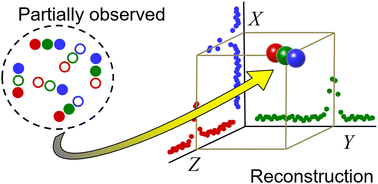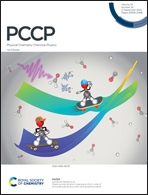Cumulant mapping as the basis of multi-dimensional spectrometry†
Abstract
Cumulant mapping employs a statistical reconstruction of the whole by sampling its parts. The theory developed in this work formalises and extends ad hoc methods of ‘multi-fold’ or ‘multi-dimensional’ covariance mapping. Explicit formulae have been derived for the expected values of up to the 6th cumulant and the variance has been calculated for up to the 4th cumulant. A method of extending these formulae to higher cumulants has been described. The formulae take into account reduced fragment detection efficiency and a background from uncorrelated events. Number of samples needed for suppressing the statistical noise to a required level can be estimated using Matlab code included in Supplemental Material. The theory can be used to assess the experimental feasibility of studying molecular fragmentations induced by femtosecond or X-ray free-electron lasers. It is also relevant for extending the conventional mass spectrometry of biomolecules to multiple dimensions.

- This article is part of the themed collections: Ions, electrons, coincidences and dynamics: Festschrift for John H.D. Eland and 2022 PCCP HOT Articles

 Please wait while we load your content...
Please wait while we load your content...